d.View
Provocative discography cannula kit
Complete and versatile.
The d.View Discography Cannula Kit was developed with the purpose of meeting the highest requirements of the procedure. That is, it has 2 cannulas (1 internal and 1 external) in order to facilitate handling and generate more stability1, as well as models with 6 cannulas (3 internal and 3 external) to perform the procedure on the discs above and below the suspect disc2. The d.View Cannula Discography Kit has a device with a digital manometer in order to measure intradiscal pressure and a marker with a ruler to assist the procedure. Complete and versatile, the Kit d.View is certainly ideal for all Discography techniques.
Procedure
How is it done?

Provocative discography is an image-guided procedure. First, a contrast agent is injected into the nucleus of the intervertebral disc so that it provides anatomical and functional information about the disc with suspected disease. Subsequently, the morphology of the disc is assessed on radiography and / or computed tomography. Functional assessment consists of provoking pain and careful assessment of the patient’s response to pain guided by the VAS scale. Finally, the results of the discography influence the surgical decision-making process, as well as the selection of the disc levels to be operated. According to the literature, the complication rate is less than 1%.3,4,5
Discography has a low rate of false positives for the diagnosis of discogenic pain.4
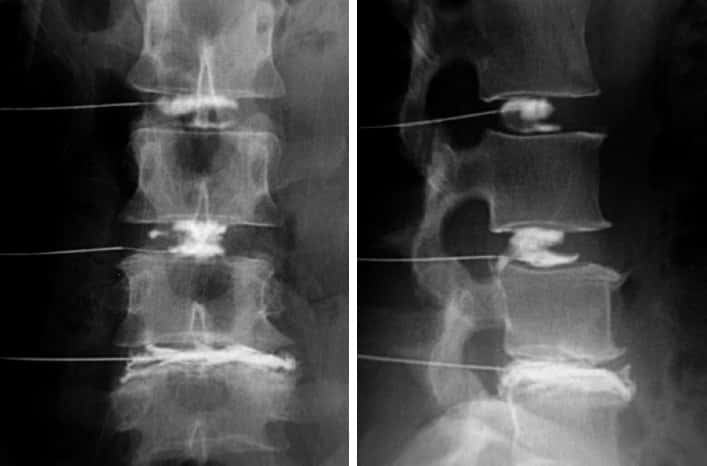
Unique diagnostic test that provides anatomical and functional information about a disc.3
Cannulas
Simple and perfect
Every cannula should be visible marked ergonomic precise complete like ours.

Bifaceted tip to increase punching accuracy
1 of 4Marking every 1cm to identify the depth of the puncture
2 of 4Ergonomic hub for easy handling
3 of 4Identification for correct stylet closure
4 of 4Every cannula should be visible marked ergonomic precise complete like ours.

Bifaceted tip to increase punching accuracy
1 of 4Marking every 1cm to identify the depth of the puncture
2 of 4Ergonomic hub for easy handling
3 of 4Identification for correct stylet closure
4 of 42 Cannula Technique
No doubt many surgeons prefer to use the double cannula technique. The Guide Cannula (external), shorter and thicker (18G or 20G), must be introduced first to stabilize the Longer and thinner (Inner) Introducer Cannula (22G or 25G) up to the disc, in order to facilitate handling. Still, this technique also offers more efficiency in terms of time, as it actually leads to a faster placement of the Introducer Cannula on the disc. In other words, it reduces the total fluoroscopy time, in addition to producing a sharper angle, often necessary to access the L5-S1 disc in patients with high ilium.1,6
Lumbar discography performed with a two-cannula technique without prophylactic antibiotics can be a safe procedure with minimal risk of developing discitis.7

Manometer
What is it for?
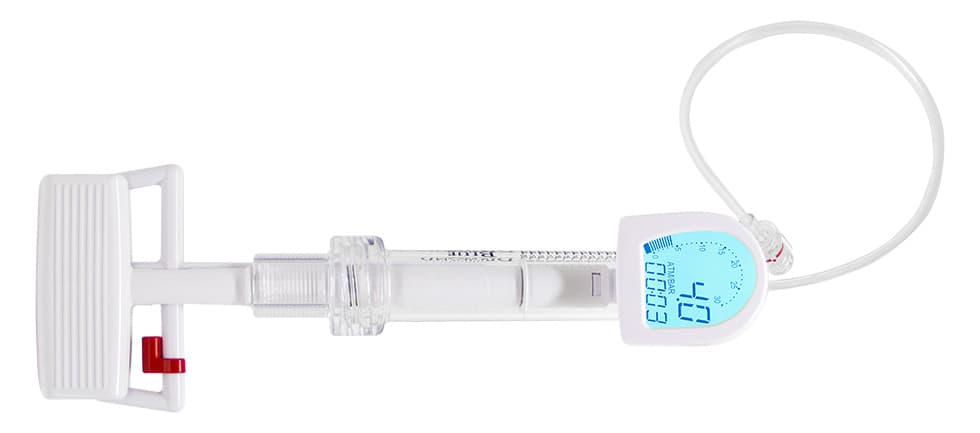
The d.View Discography Cannula Kit has a pressure gauge that is attached to the introducer cannula to measure intradiscal pressure. Firstly, the opening pressure information (P0) is collected and, later, the pressure at the beginning of the pain, as well as the maximum pressure (Pmax) are recorded through it. The opening pressure is recorded when the contrast is seen on the disc. However, the disc is pressurized until pain is caused. For the disc to be considered chemically sensitive, the pain must be caused at a pressure of less than 15 psi. As a result, the disc is highly sensitive and requires no further pressure to respond. However, if the pain is caused between 15 and 50 psi, the disc is mechanically sensitive.8
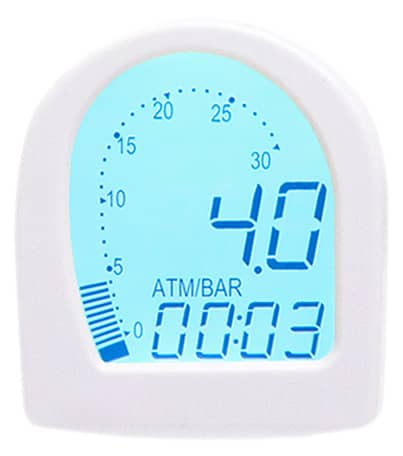
Using the positive low pressure criteria (≤ 15 psi), a low rate of false positives can certainly be obtained. As a result of a basic research with meta-analysis of data, using the ISIS standard, the discography has a specificity of 0.94 (95% CI 0.88 – 0.98), as well as a false positive rate of 0.06 . There is strong evidence for the diagnostic accuracy of discography according to level II-2 studies by the Health Research Quality Agency. In conclusion, discography has a low rate of false positives for the diagnosis of discogenic pain.4
Digital numerical display to facilitate visualization of intradiscal pressure
Stopwatch to measure the procedure time
Graphic control to aid pressure measurement
Marker and ruler
It’s easier to plan

Undeniably a simple but powerful tool. The marker and the ruler can be used before performing the puncture, in order to facilitate the location to introduce the Guide Cannula. The ruler has markings in the metric system, as well as in the inch system. The marker has a 1.0mm thin tip, so it can make thin, clear and smooth strips.
Metric and inch ruler
Smooth marking with 1mm tip
Disposable and single-use material
Composition
d.View Discography Cannula Kit
- Guide cannula (external)
- Introducer cannula (internal)
- Inflator device with 3-way adapter
- 22G Needle
- Marker with ruler
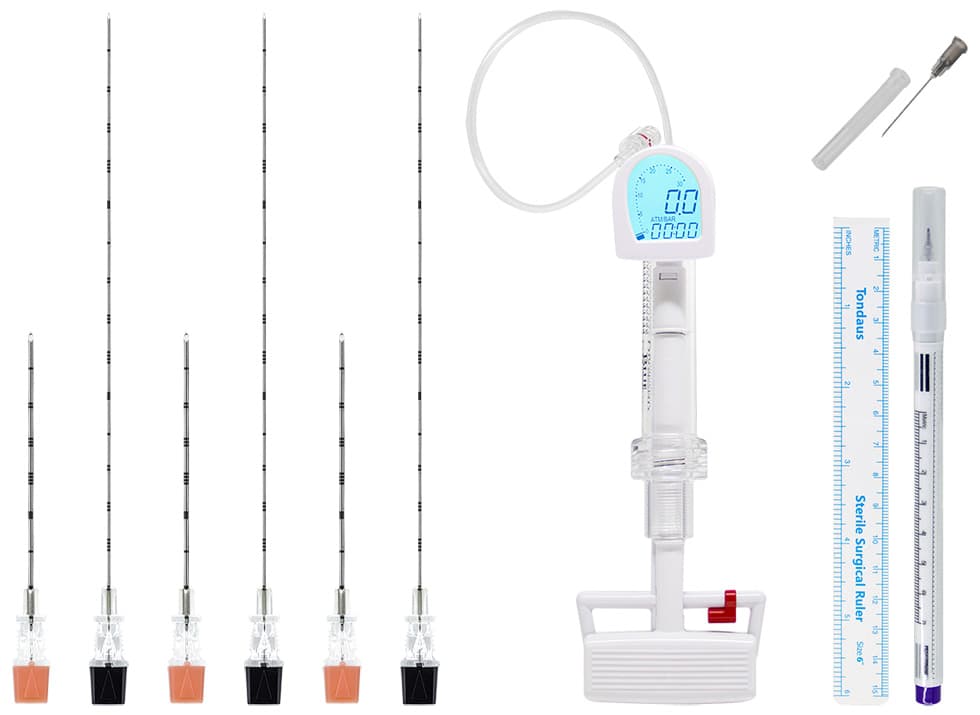
Imagem ilustrativa
Safety & convenience
Kit with 6 cannulas?
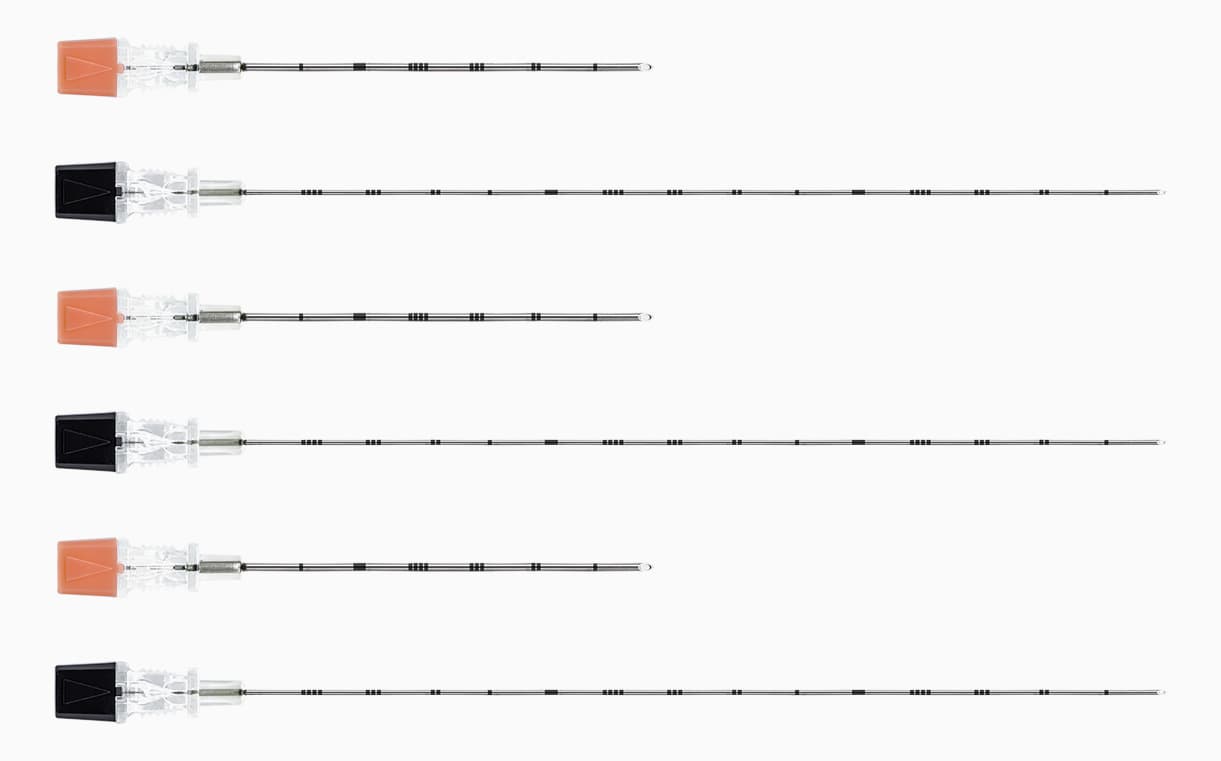
First of all, the levels to be examined during the discography procedure are chosen based on a combination of the patient’s history, physical examination and additional examinations. Not only is the symptomatic level examined, but also the two adjacent levels are examined. The two adjacent intervertebral discs are examined for control levels. Eventually, the least degenerate or most likely asymptomatic levels are studied first. The patient should not, however, know what level the procedure will be performed, nor should he be advised of the start of stimulation on the disc.9
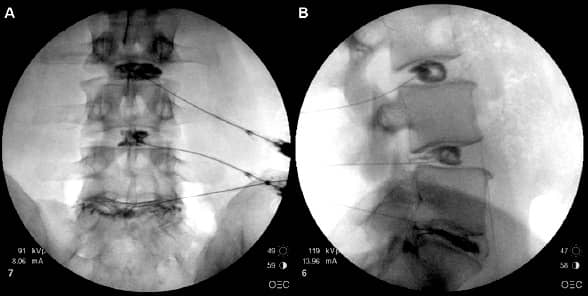
Codes and models
Quantity of cannulas
| Ref. code | Guide cannula | Introducer cannula | ||||
|---|---|---|---|---|---|---|
| Diameter | Length | Qty. | Diameter | Length | Qty. | |
| DVS-1822-07 | 18G | 70mm | 1 | 22G | 150mm | 1 |
| DVS-1822-07/3 | 18G | 70mm | 3 | 22G | 150mm | 3 |
| DVS-1822 | 18G | 100mm | 1 | 22G | 150mm | 1 |
| DVS-1822/3 | 18G | 100mm | 3 | 22G | 150mm | 3 |
| DVS-1822-20 | 18G | 100mm | 1 | 22G | 200mm | 1 |
| DVS-1822-20/3 | 18G | 100mm | 3 | 22G | 200mm | 3 |
| DVS-1822-1520 | 18G | 150mm | 1 | 22G | 200mm | 1 |
| DVS-1822-1520/3 | 18G | 150mm | 3 | 22G | 200mm | 3 |
| DVS-2025-07 | 20G | 70mm | 1 | 25G | 150mm | 1 |
| DVS-2025-07/3 | 20G | 70mm | 3 | 25G | 150mm | 3 |
| DVS-2025 | 20G | 100mm | 1 | 25G | 150mm | 1 |
| DVS-2025/3 | 20G | 100mm | 3 | 25G | 150mm | 3 |
| DVS-2025-20 | 20G | 100mm | 1 | 25G | 200mm | 1 |
| DVS-2025-20/3 | 20G | 100mm | 3 | 25G | 200mm | 3 |
| DVS-2025-1520 | 20G | 150mm | 1 | 25G | 200mm | 1 |
| DVS-2025-1520/3 | 20G | 150mm | 3 | 25G | 200mm | 3 |